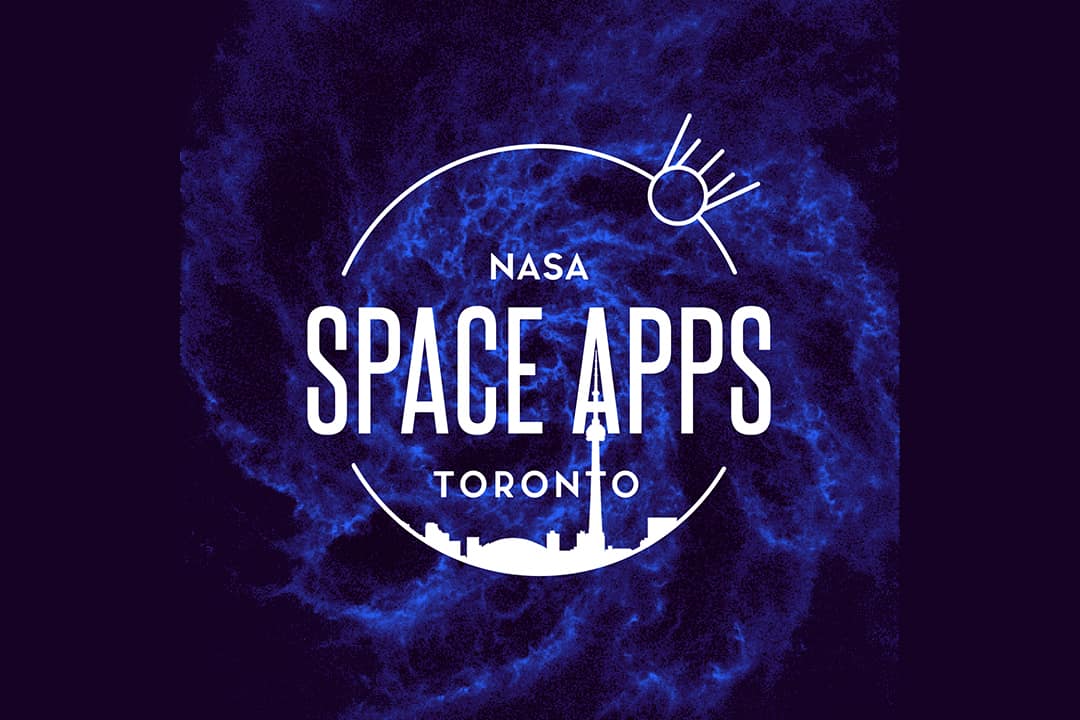Every year, NASA hosts the Space Apps Challenge, an international hackathon designed to make use of NASA’s vast stores of data about the Earth and the far reaches of space. This year, Space Apps ran from October 2–4, and thousands of teams of creators from all over the world submitted their own solutions to the world’s problems. And — like many other events these days — the hackathon was held entirely online.
The Toronto chapter of the hackathon included over 50 people, submitting a total of 16 complete projects. The top two teams — 3.14Heads and Rain Rangers — are proceeding to the global judging phase, where a short list of finalists are picked to get the opportunity to present their project to a worldwide audience.
The Toronto chapter was co-organized by the U of T Astronomy and Space Exploration Society (ASX).
The story behind the hackathon
In 2018 and 2019, Space Apps Toronto had been organized entirely by the Canadian branch of Students for the Exploration and Development of Space (SEDS). This year, it has been run by a group of Toronto university students, mostly hailing from U of T and Ryerson University.
Spencer Ki, a member of ASX, was one of the event’s organizers. His first encounter with Space Apps was through the special COVID-19 focused event held in May. “As soon as I realised that each location is… thrown together by random people instead of centrally managed by NASA, I tried to get ASX involved,” Ki wrote to The Varsity.
ASX, SEDS, and organizers from RU Hacks, Ryerson’s annual hackathon, have been working together since early June to set up this Space Apps event.
Another U of T student, Lucy Ma, is one of the SEDS event coordinators who worked on Space Apps. She’s had experience organizing hackathons, but she said that this one was very different. Although Ma found that the online format allowed for faster, more direct communication between participants and organizers — which could be difficult during in-person hackathons — she said that reaching people was challenging.
“Before, if it was in person, you knew when a hackathon is happening — you [saw] people sleeping on the benches,” Ma said in an interview with The Varsity. “But with a virtual hackathon, how do you engage people? How do you advertise it?”
Of course, like so many others during the pandemic, participants have found that online events come with some benefits as well. “I specifically appreciated the use of the discord channel to quickly gather information and track updates,” Joshua Smith, a member of team Above the Horizon, wrote.
How to talk to satellites
The project from the winning team 3.14Heads, LinkedUp, is a game designed to explore the complexities of communicating with space missions. Users are presented with a dashboard that lets them control the physical properties of a “signal” that they send to a virtual satellite. Once they’ve settled on their parameters, the program evaluates whether their satellite link would hold.
“We hoped to demystify the technical side of things through a nice user interface,” Ketan Vasudeva, a U of T student and member of 3.14Heads, wrote to The Varsity. “In all honesty, going to Mars, space travel in general, is one of my dreams… I hope that tools and challenges like this continue to pop up to get everyone excited about the future of human space flight!”
According to the official project brief of second place team Rain Rangers, it set out to “develop an application that [the members] personally would find useful.” Users of Rain Rangers’ program can plug in a time range and receive a list of asteroids passing close to Earth during that period, along with drawings of their orbits. The team has also developed an SMS notification service that pairs with the project to warn users about any asteroids identified as “hazardous.”
Existing tools to learn about nearby asteroids, the team said, all require some prior knowledge to use — but to use the Rain Rangers application, you don’t need to know the name or exact position of asteroids to figure out which ones might be passing by Earth.
The People’s Choice Award, given by fellow participants, went to team Above the Horizon. Their project also focused on objects flying in the night sky. However, instead of asteroids, Above the Horizon allowed users to identify satellites they might spot flying around their night sky.
The program displays a map of the night sky given a specified place, time, and date, and then labels all satellites that would be visible in that segment of the sky. Clicking on any particular satellite shows the user the satellite’s view of Earth.
A variety of challenges
In total, NASA gave competitors 23 challenges split into seven major categories. Although many of the challenges were designed for people with some programming experience, there were some that people with all sorts of skill sets could contribute to, as well as challenges specifically designed for youth participants.
“They definitely really encouraged diversity,” said Ma. “Hackathons shouldn’t be a thing that [are] just for programmers… [They] should be a thing for anyone who can design, anyone who can innovate, anyone who can create something cool and impactful.”
All in all, participants from Space Apps Toronto tackled a wide range of challenges — more than half of those set out by NASA, including space mission simulations, wildfire detection systems, and interactive explorations of NASA’s history. All projects submitted to Space Apps Toronto 2020 can all be found on the Space Apps homepage.
Space Apps 2021 will be held from October 2–3, 2021.
Disclosure: Spencer Ki is The Varsity’s Volume 141 Business Editor.


